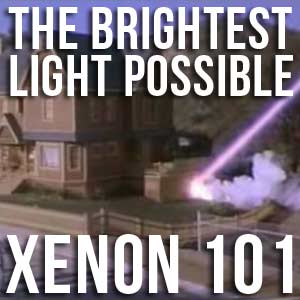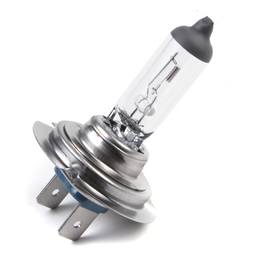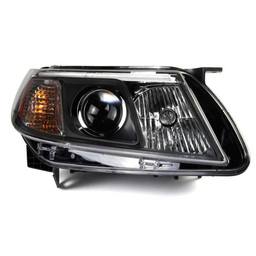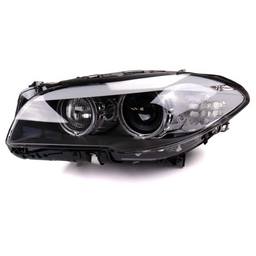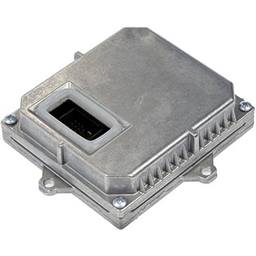Headlights have a massive impact on one’s driving experience at night. Your ability to see the road surface far enough ahead isn’t a matter of comfort but safety. Highways are easy, but as soon as you get on to low priority roads, you have to be able to see what’s up ahead. One of the most popular illumination technologies used in headlights today is HID lights.
Compared to standard halogen technology, HID has proven to be much more efficient in basically every way imaginable. Join us as we dig deeper into this subject, explaining what HID lights are, how they work, and much more!
HID Lights – the Basics of Automotive Headlights
Traveling at night has always brought more risk, from the time people got around on horseback, until today. Being able to see and be seen at night is paramount to safety, which is why automotive illumination keeps evolving. You’d think that we would have perfected a light source by now; however, it’s an ever-evolving process.
HID lights or xenon lights are a part of that evolution. Until this type of light source was brought to the mainstream, most cars had halogen bulbs that weren’t all too different from regular lightbulbs. Both used metallic filaments, and both were not all that efficient.
The introduction of HID technology completely changed the game in that headlights became much more efficient and customizable. Drivers whose cars were equipped with HID lights could see farther and enjoy better illumination of the road resulting in a much safer driving experience.
What is HID or High-Intensity Discharge Light?
Conventional incandescent lights work by driving electricity through a metallic filament in the middle of the bulb. As a result, the filament heats up to a point where it starts to glow, thus offering illumination. HID lights are different.
Instead of relying on a filament to provide light, HID drives an electric arc through a chamber filled with inert gas, usually xenon. That’s the basic description of what goes on inside one of these bulbs.
There’s a little bit more to it, though. Your average HID light consists of three main parts – a ballast, an igniter, and a xenon bulb.
How Does HID Light Work?
The moment you turn on the lights on your car, a high voltage arc is fired by the igniter element through the xenon bulb. Once you have an established arc inside the bulb, the ballast component takes over. Its job at this point is to drive a specific amount of voltage and current to keep the bulb burning at a consistent rate.
Your average HID bulb doesn’t only contain the inert gas such as xenon, among others, it’s also filled with salts that evaporate into a plasma state. From the moment you’ve got an established plasma state, the bulb will increase its output until it reaches its default brightness.
Next time you start your car, pay attention to what your headlights are doing. You can actually observe this entire process from the ignition phase to warm up and finally nominal brightness.
Benefits of HID Lights
The benefits of HID lights are numerous, and they go way beyond the cool aesthetics. Running HID in your car has positive effects on your safety and your ability to see at night. On top of that, there’s a matter of power efficiency and bulb lifespan as well.
- Better Illumination – The main advantage of HID lights is their level of illumination. Combined with projector headlights, which are a must, you’re looking at a massive boost in range and beam quality compared to standard halogen lights. This, in turn, gives you a much better view of the road at night. Needless to say, being able to see better and farther means that you have more time to react to potential hazards. HID lights improve safety.
- Increased Efficiency – HID technology has completely put halogen lights to shame when it comes to energy efficiency. Your average xenon light bulb will be four times as efficient as its halogen counterpart when it comes to lumens per watt. Although there are many more power-hungry electrical systems in a vehicle, having efficient headlights will make your alternator’s life a little bit easier.
- Bulb Lifespan – Xenon lights have proven to be much more durable compared to a halogen alternative. Since the light source is the ignited gas and not a glowing hot filament, there’s nothing to break due to heat. However, that doesn’t mean that HID bulbs can’t die. They just don’t die nearly as often.
HID Conversion – How to Do It Properly
Installing xenon lights in a car is one of the most popular aesthetic upgrades in the community. A pair of HID bulbs can transform the appearance of a car at night. Not to mention all different types of HID lights out there. However, there are two ways to get there – the right and wrong way. As it turns out, there’s plenty of people who go for the latter.
Have you ever driven down the road only to be blinded by the car coming towards you? Unless that person was running high beams, the chances are that you got blinded by improperly installed HID bulbs. The issue with xenon bulbs is that they can’t focus the light on their own.
Reflector Housings Vs. Projector Housings
To understand why HID drop-in kits aren’t always the best solution or legal one for that matter, we have to look into headlight housings. Most halogen headlights are what you call reflector headlights. In other words, the interior of the headlight housing is lined up with chrome surfaces. These surfaces are angled and oriented in a specific way that focuses the halogen light beam into a particular pattern.
When you drop in a pair of HID bulbs into a reflective housing, that reflective surface is no longer capable of delivering a tight beam. Instead, you’re left with light that’s going everywhere, which is neither efficient nor safe.
Xenon lights require projectors to control the beam. If you were to park a car fitted with projector HID headlights, you would see a closely controlled light beam with a nearly perfect cut.
If you want HID lights in your car, be prepared to either get complete aftermarket headlights or to heavily modify your existing headlights to accept projectors. Needless to say, the former option is a much better choice.
HID Brightness and Color
There’s a lot of misconception out there regarding the brightness and color of xenon lights. It doesn’t help that we use Kelvins as a unit to define different properties of xenon lights. However, a higher Kelvin value doesn’t mean a brighter bulb.
Kelvin is a unit of temperature. The reason it’s used in the context of automotive lights is that HID bulbs can mimic the ‘color’ of different temperatures. The color scale goes from dark yellow through white all the way to blue and purple.
As far as brightness goes, you’ll find that a 5,000K white HID has double the blue 12,000K HID brightness. Why? Because our eyes are designed to recognize different wavelengths of light better than others. Anything closer to the ultraviolet or infrared is going to be harder to see. Wavelengths in the middle of the spectrum, coincidentally around 5,000K, are much easier to see for us humans.
HID Vs. LED Comparison
One of the technologies that have appeared as a challenger to the HID is LED lights. LEDs have become immensely widespread to the point that just about every device or machine that has lights, has LED lights. That said, it comes as no surprise that LED has become an option when it comes to headlights as well.
It’s no secret that we’re slowly reaching the limits of HID tech. We’ve perfected these bulbs to a point where we know exactly what kind of performance to expect. On the other hand, we’re just scratching the surface on LEDs.
LED tech has a lot of potentials. It’s efficient, reliable, and there’s more leeway for experimentation. However, when it comes to choosing – HID or LED, we would still go with HID. The fact that this technology is perfected means that there are no surprises. With LEDs, there are no defined standards just yet.
Finding the Right HID Spare Parts for Your Car
If you’re looking for HID components for your car, you’re in the right place! We offer a massive catalog of parts for various European vehicles. To find the components that fit your vehicle, simply head over to our online store and input your car’s year, make, and model. Once you do that, our system will list out all of the parts that match your vehicle.
Alternatively, you can also use our VIN search tool for more precise results! Feel free to get in touch with us if you have any questions regarding xenon lights. Our customer service is standing by help you out.

